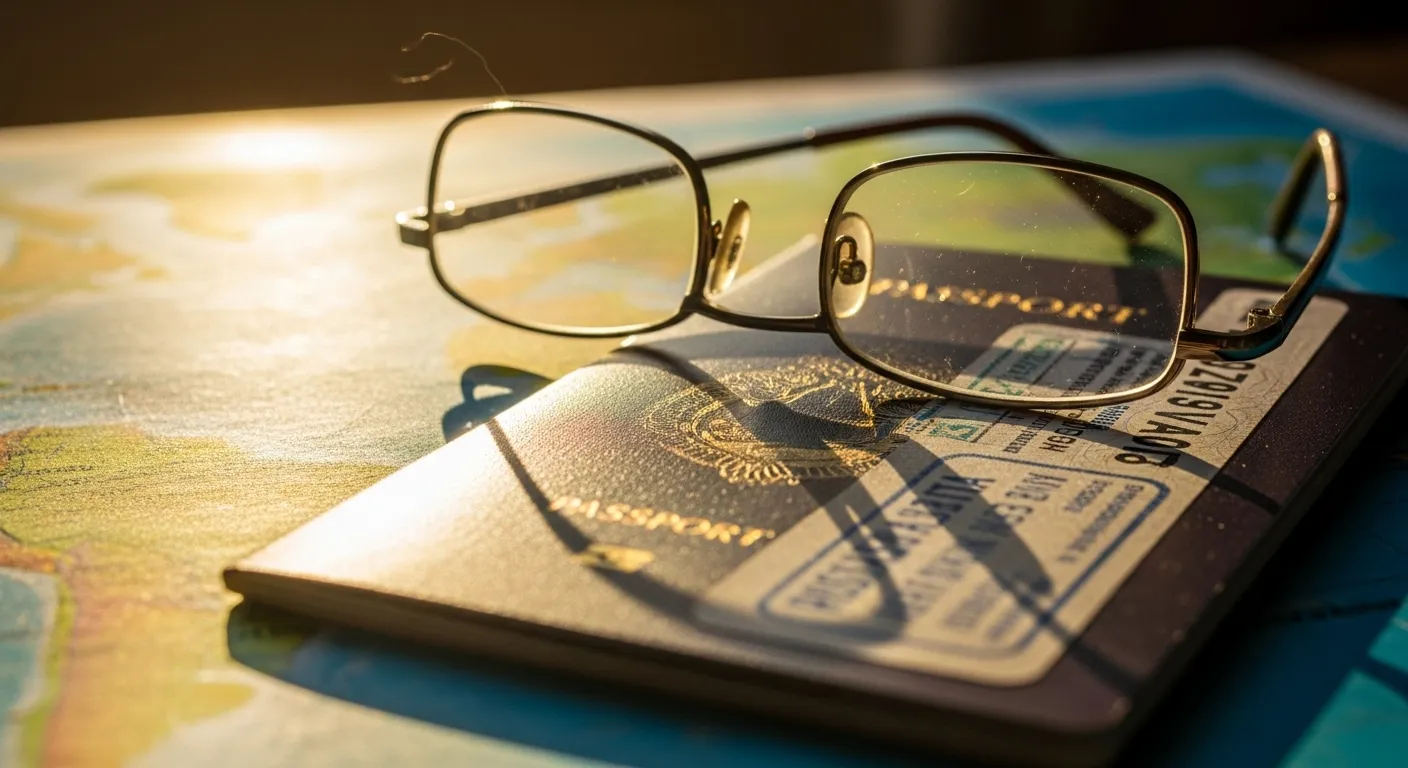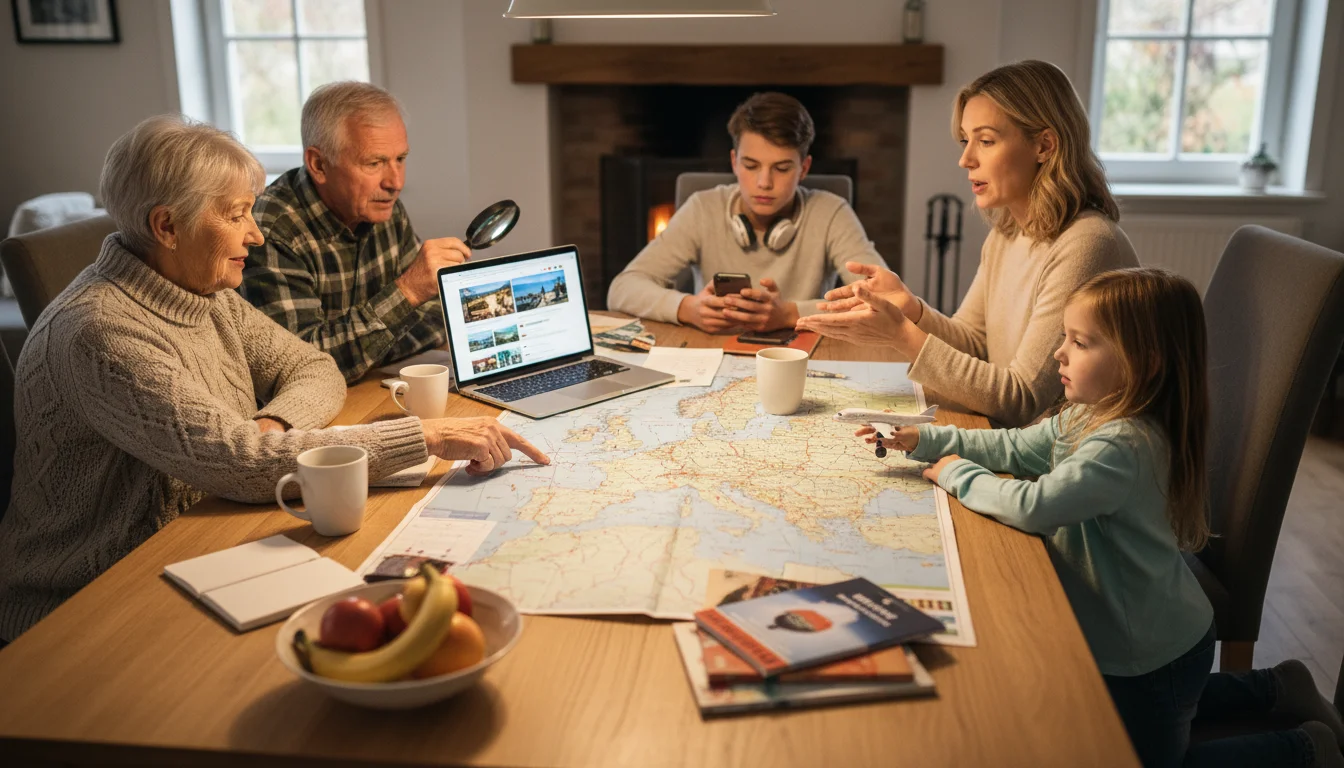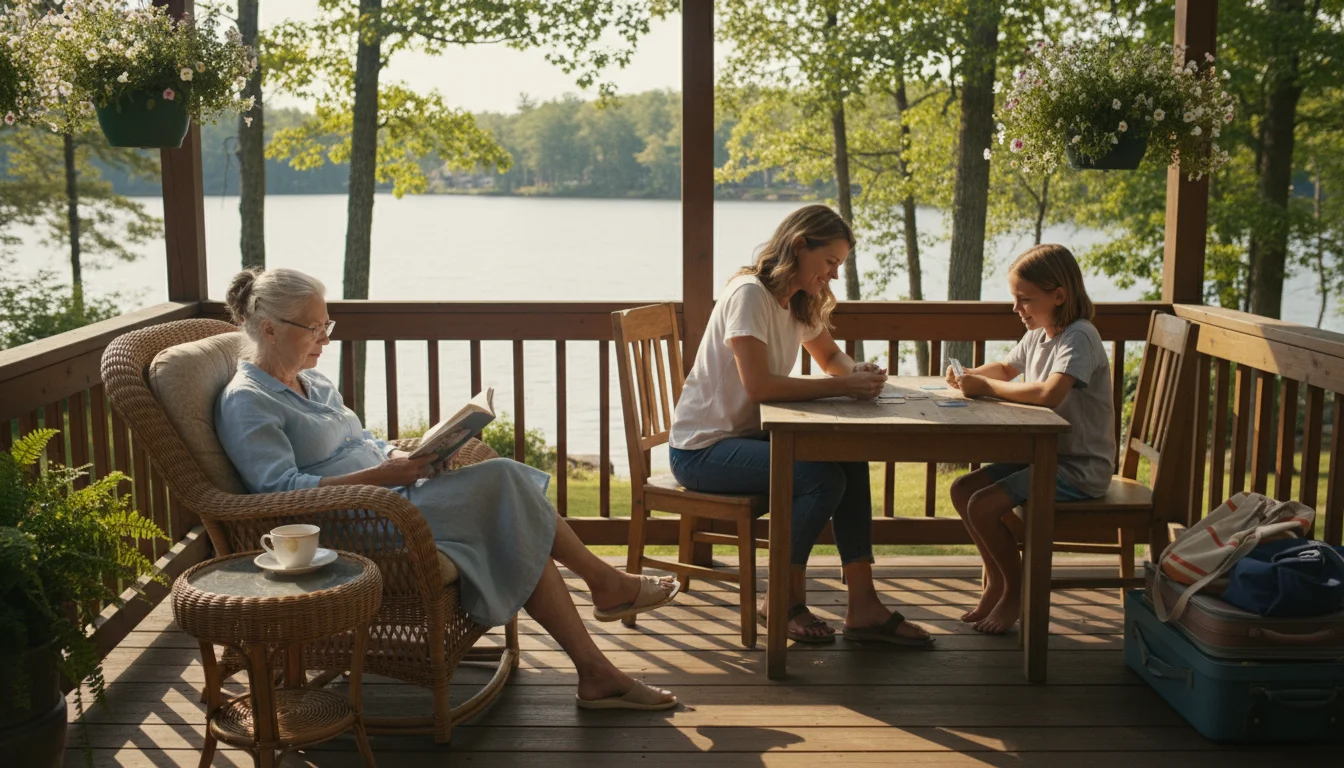

Introduction: Embracing the Joy of Togetherness
One of the great joys of retirement is having the time to truly connect with family. The years of juggling careers and raising children have given way to a season where we can savor the relationships we’ve built. For many of us, the ultimate dream is to gather the whole clan—our children, their spouses, and the grandkids—for a memorable vacation. The idea is pure magic: grandparents, parents, and grandchildren all sharing an experience, creating stories that will be told for years to come.
But let’s be honest. The idea is magical; the reality can feel… complicated. Coordinating schedules across three generations, managing different budgets, and finding activities that entertain a 7-year-old, a 17-year-old, and a 70-year-old can feel like a logistical nightmare. It’s easy to see why so many of these dream trips remain just that—a dream. The fear of stress, disagreements, and exhaustion can be enough to stop the planning before it even starts.
But it doesn’t have to be that way. A multi-generational vacation can be one of the most rewarding experiences of your life, strengthening family bonds and leaving everyone with a treasure chest of shared memories. The secret isn’t avoiding challenges; it’s planning for them. With a little foresight, open communication, and a flexible mindset, you can design a trip that is genuinely enjoyable for everyone involved. This guide is here to help you navigate the process, turning potential stress into shared success and creating a blueprint for harmonious family travel.

Finding Your Path: Choosing the Right Trip for Every Generation
The first step in planning a stress-free group vacation is choosing a destination and style that fits your family’s unique personality, budget, and energy levels. The “perfect” trip for one family might be a week of blissful relaxation, while for another, it’s an action-packed adventure. Thinking through the options is a crucial part of smart senior planning. Here are a few popular models for multi-generational travel, each with its own set of benefits.

The All-Inclusive Resort: Maximum Relaxation, Minimum Logistics
If the goal is to truly unwind and let someone else handle the details, an all-inclusive resort is often the perfect solution. These resorts are designed to cater to a wide range of ages and interests. Your booking typically includes lodging, meals, drinks, and a host of on-site activities. Grandkids can spend hours at the pool or in the supervised kids’ club, teenagers can try water sports, and adults can enjoy a quiet moment at the spa or with a book on the beach. The beauty of this option is its simplicity. There are no daily debates about where to eat or how much an activity costs, which significantly reduces friction. It’s an excellent choice for families who want to spend quality time together without the pressure of constant decision-making.

The Vacation Rental Home: Your Home Away From Home
For families who value flexibility, space, and a more intimate setting, renting a large house, cabin, or a collection of condos can be ideal. A vacation rental provides a central gathering space—a living room for board games, a backyard for barbecues, and a kitchen for preparing shared meals. This option can be one of the most affordable trips for a large group, as cooking your own breakfasts and a few dinners can save a significant amount of money. It also allows for a more relaxed pace. You’re not on anyone’s schedule but your own. This setup is perfect for families who enjoy cooking together and want the freedom to create their own itinerary, blending group activities with plenty of downtime for naps, reading, or quiet conversation.

The Cruise: A Floating Resort with Changing Scenery
A cruise offers a fantastic blend of the all-inclusive model and the excitement of visiting multiple destinations. You only have to unpack once, yet you can wake up in a new port every day or two. Modern cruise ships are marvels of entertainment, with options ranging from Broadway-style shows and swimming pools to rock-climbing walls and fine dining. This variety ensures that everyone, from the youngest grandchild to the most seasoned traveler, can find something to enjoy. Excursions can be booked as a group or individually, allowing for flexibility. For seniors with mobility concerns, cruises are often a very accessible way to travel, with elevators, accessible cabins, and options for less strenuous shore excursions.

The National Park Adventure: Natural Wonders for All Ages
If your family shares a love for the great outdoors, a trip to one of America’s stunning national parks can be an unforgettable experience. This type of trip can be tailored to various fitness levels. You can stay in a historic park lodge, rent a nearby cabin, or even try a family-friendly campground. Days can be spent on scenic drives, enjoying picnics with breathtaking views, attending ranger-led talks, and taking walks on accessible, paved trails. Younger kids love the Junior Ranger programs, while the whole family can be awed by the scale of nature. Travel and recreation information for seniors is available at the National Park Service, and the lifetime Senior Pass makes this an incredibly affordable option for exploring these national treasures.

Tips for Getting Started: The Blueprint for a Harmonious Holiday
Once you have an idea of the type of trip you want to take, the real planning begins. This is where communication and organization become your best friends. A well-thought-out process can prevent misunderstandings and ensure everyone feels included and valued. Follow these steps to build a solid foundation for your trip.

Step 1: Hold a Family “Dream Session”
Before a single reservation is made, gather the key players—typically your adult children—for a kickoff meeting. This can be in person, on the phone, or via a video call. The goal is to get everyone on the same page. This isn’t the time for logistics; it’s the time for dreaming. Ask open-ended questions: What does a perfect vacation look like to you? Are you craving relaxation or adventure? What’s one thing you’d love to do or see? This collaborative approach ensures that the trip reflects the desires of the entire group, not just one person. It’s also the time to discuss the big-picture items: potential dates that work for everyone’s school and work schedules, and a general budget range.

Step 2: Designate a “Lead Planner” (or a Duo)
Democracy is great for brainstorming, but it can be inefficient for execution. To avoid the “too many cooks in the kitchen” problem, designate one or two people to be the “lead planners.” This person (or pair) will be responsible for the research, booking flights and accommodations, and keeping track of the details. This doesn’t mean they make all the decisions in a vacuum. The lead planner’s role is to present a few well-researched options to the group for a final vote, rather than having ten different people all looking at ten different hotels. This streamlines the process and reduces confusion.

Step 3: Have an Honest Conversation About the Budget
Money can be an uncomfortable topic, but addressing it head-on is one of the most important things you can do to prevent stress. Family members are often in very different financial situations. Be transparent. Decide as a group how costs will be shared. Will each family unit pay its own way? Are the grandparents treating everyone to the lodging? A common approach is for each family to cover their own transportation, while the cost of a rental house and groceries is split evenly. For activities, you might agree that some are group-funded while others are optional. The key is to create a plan that feels fair and comfortable for everyone, ensuring no one feels financially strained.

Step 4: Build a Balanced Itinerary with Plenty of “Free Time”
One of the biggest mistakes in family travel is over-scheduling. The temptation is to pack every moment with activities to make the most of the time together. This is a recipe for exhaustion and crankiness. A successful multi-generational itinerary has three key ingredients:
- One “Anchor” Activity Per Day: Plan one main thing for the group to do together, like a museum visit, a hike, a boat tour, or a special dinner.
- Optional Breakout Activities: Offer choices. Maybe the grandparents take the little ones to the playground while the parents go for a long walk. Perhaps the teenagers and their parents go ziplining while you enjoy a quiet afternoon reading.
- Scheduled Downtime: Block out time on the schedule with no plans at all. This allows for spontaneous fun, naps, and the simple pleasure of just being together without an agenda.

Step 5: Set Expectations About Roles and Responsibilities
Unspoken expectations are a primary source of conflict. Before you leave, have a gentle conversation about day-to-day life on the trip. If you’re in a rental home, who is responsible for cooking and cleaning? A simple chore rotation can keep things fair. If you’re traveling with young grandchildren, be clear about your role. While you cherish time with them, this is your vacation, too. It’s perfectly acceptable to say, “We would love to watch the kids on Tuesday night so you two can have a dinner out, but we’d also like to have a few quiet afternoons to ourselves.” Clarity upfront prevents resentment later.

A Personal Perspective: Lessons from the Trenches of Family Travel
Over the years, my friends and I have collected our fair share of stories from these grand family adventures—some hilarious, some challenging, but all of them valuable. One friend, Martha, planned an ambitious two-week trip to Italy with her children and teenage grandchildren. She had an itinerary planned down to the minute. On day three, a rail strike threw their entire schedule into chaos. Initially, she was devastated. But they ended up spending an unplanned day exploring a small town, where they stumbled upon a local festival and had the most authentic and memorable experience of their entire trip. Her lesson? Flexibility is not a weakness; it’s a superpower. The best moments often happen when plans go awry.
Another friend, David, shared his experience on a beach trip where he felt he was constantly being pulled in different directions. He wanted to read his book, but the grandkids wanted him to build sandcastles, and his son wanted to go kayaking. He felt guilty saying no to anyone and ended the first few days feeling completely drained. Finally, his wife encouraged him to speak up. He announced that from 2 to 4 p.m. every day was his “recharge time” on the porch. The family completely understood. His lesson was a crucial one for many of us in the senior generation: It is not selfish to state your own needs. You cannot pour from an empty cup, and taking time for yourself allows you to be more present and joyful when you are with the group.
The common thread in all these stories is that the challenges are temporary, but the memories are permanent. The goal isn’t a “perfect” vacation without a single hiccup. The goal is connection. It’s the moment you see your grandchild’s face light up at the sight of the ocean for the first time. It’s the quiet conversation you have with your daughter on a morning walk. It’s the sound of the whole family laughing together around a dinner table. These are the moments that make every bit of planning and coordination worthwhile.

Resources to Help You Plan Your Adventure
You don’t have to plan your trip in a vacuum. There are many wonderful resources available to help you find ideas, deals, and inspiration. Taking advantage of these can make the senior planning process much smoother and more enjoyable.
Start with trusted organizations that cater to our demographic. For lifestyle and community resources, AARP offers extensive articles and travel discounts that can make your trip more affordable. Their website is a treasure trove of destination guides and tips for mature travelers. If your family enjoys giving back, you might even explore opportunities to volunteer together. Opportunities to give back can be found via AmeriCorps Seniors, which could inspire a different kind of family trip centered on service.
For outdoor-focused trips, the official websites are your best friends. As mentioned, the National Park Service website is essential for planning visits, checking on trail accessibility, and booking lodging. For local programs, check your city or county’s Parks and Recreation department website; they often have great suggestions for shorter, closer-to-home getaways that can serve as a perfect “test run” for a bigger vacation.
Finally, consider online travel communities and blogs that specialize in multi-generational travel. Reading about the experiences of other families can provide practical tips and destination ideas you might not have considered. Websites like The Family Travel Association or Ciao Bambino offer expert advice tailored to traveling with children of all ages.

Frequently Asked Questions
Q: How do we handle the finances fairly when everyone has a different budget?
A: Open communication is key. One successful method is to have one family member pay for the large, shared expense like lodging, and then have other families cover daily costs like groceries or a group dinner out. Alternatively, you can use a free app like Splitwise, where anyone can log an expense they paid for the group, and the app calculates who owes whom at the end of the trip. The most important thing is to agree on a system before the trip begins.
Q: What’s the best way to travel with a family member who has limited mobility?
A: Focus on accessibility from the very beginning. Cruises and all-inclusive resorts are often excellent choices, as they are typically designed to be ADA-compliant. When booking a vacation rental, use filters to search for “step-free entry” and a “first-floor bedroom and bathroom.” Call hotels and attractions directly to inquire about elevators, ramps, and accessible restrooms. Companies like Scootaround rent mobility scooters and wheelchairs in major tourist destinations worldwide, delivering them right to your hotel or cruise ship.
Q: My grandkids are teenagers. How do I get them to engage and put their phones down?
A: Involve them directly in the planning process. Ask for their input on destinations and activities—you might be surprised by their great ideas. Plan at least one activity geared specifically toward their interests, like surfing lessons, a trip to a cool vintage shop, or a ghost tour. It’s also effective to set mutually agreed-upon “tech-free” times, such as during meals or a specific family game night. Don’t ban phones entirely, but create moments where connection is the priority.
Q: We want to do this, but the thought of planning it all is overwhelming. Where do we start?
A: Start small! You don’t have to begin with a ten-day European adventure. Plan a long weekend to a destination just a few hours’ drive away. This allows you to practice the dynamics of group travel on a smaller, lower-stakes scale. Another excellent option is to use a travel agent. A good agent who specializes in family or multi-generational travel can be invaluable. They handle all the logistics and can offer expert advice, saving you time and reducing your stress significantly.
Disclaimer: The advice in this article is based on general experience and is for informational purposes. Please research local opportunities and consult with relevant experts before making significant lifestyle changes or purchases.
For expert guidance on senior health and finance, visit Social Security Administration (SSA), Consumer Financial Protection Bureau (CFPB) and Administration for Community Living (ACL).
|
Fact-Checked Content
Our editorial team reviews all content for accuracy and updates it regularly. Learn about our editorial process →
|

















